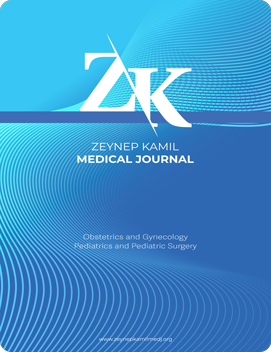Quick Search
The impact of cervical dilation at admission on cesarean section rates and hospital stay: A comparative study of early and late admission in term pregnancies
Gizem Berfin Uluutku Bulutlar1, Eralp Bulutlar2, Büşra Parlak Somuncu31Department of Obstetrics and Gynecology, Haydarpaşa Numune Training and Research Hospital, Istanbul, Turkey2Department of Obstetrics and Gynecology, University of Health Sciences, Turkey. Istanbul Zeynep Kamil Maternity and Childrens Diseases Health Training and Research Center, Istanbul, Turkey
3Department of Public Health, Trabzon Provincial Health Directorate, Trabzon, Turkey
INTRODUCTION: The increasing cesarean section rates both in our country and worldwide have become a major public health concern. While cesarean sections are life-saving operations when performed under proper indications, they increase the risks of complications and place a significant economic burden on healthcare systems.
METHODS: This retrospective cohort study aimed to evaluate the effects of cervical dilation at hospital admission on cesarean section rates and hospital stay durations. Birth records from City Hospital between May 2020 and January 2021 were reviewed. Pregnant women between 3741 weeks of gestation with no prior cesarean section and vertex presentation were included. Participants were divided into two groups based on cervical dilation at admission: early admission (EA) and late admission (LA). Statistical analyses were performed using SPSS 23.0, with a significance level of p<0.05.
RESULTS: A total of 550 pregnant women participated in the study. The cesarean section rate was significantly higher in the EA group (19.0%) compared to the LA group (2.5%) (p<0.001). The time between hospital admission and delivery was significantly longer in the EA group (p<0.001). The average hospital stay was 2.8±1.3 days for the EA group and 1.9±0.9 days for the LA group (p<0.001).
DISCUSSION AND CONCLUSION: Early admission is associated with higher cesarean section rates, prolonged labor durations, and extended hospital stays. These findings suggest that the timing of hospital admission plays a crucial role in maternal outcomes and that managing admission timing could improve delivery processes. Reducing early admissions, particularly for low-risk pregnancies, may help decrease unnecessary medical interventions and improve maternal outcomes.
Manuscript Language: English
















